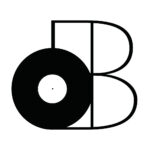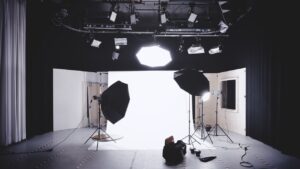If you’ve got something important to say, then you need to be heard!
Podcasting (and streaming) has become one of the best ways to interact with your audience and spread your brand’s message. However, what you SOUND LIKE is more important than you think.
That’s why you’ll need one of the best microphones for podcasting and streaming.
Most of the microphones we’ll be looking at are dynamic microphones, but they really do come in all shapes and sizes. I know that you’ll find one that suits your needs!
I’ll also be recommending some higher-end microphones if you’re SUPER serious about your craft!
Just remember though… There isn’t a microphone on this list that’ll fit every situation, so I’ll do my best to explain WHO each microphone will be best suited for.
So, let’s find out which microphone YOU’LL be working with!
- Best USB Microphone – Samson Q2U
- Best Headset Microphone – Audio Technica BPHS1
- Best Dynamic Microphone – Shure SM7B
- Best Condenser Microphone – Lewitt LCT 440 PURE
- Best Professional Microphone – Sennheiser MKH 416
- What Type of Microphone Is Best for Podcasting and Streaming?
- Summary: 5 Best Microphones for Podcasting and Streaming
Best USB Microphone – Samson Q2U
| Type | Dynamic |
| Polar Pattern | Cardioid |
| Frequency Range | 50 – 15,000 Hz |
| Connector | USB/XLR |
| Output Impedance | N/A |
| Phantom Power | NO |
| Accessories | – Desk Tripod – USB Cable – XLR Cable – Foam Windscreen |
We’re starting with the most affordable, accessible AND versatile microphone for podcasting and streaming… The Samson Q2U.
It’s actually the most affordable microphone on this list.
It’s the most accessible because it can be connected via XLR, USB and it even has an integrated headphone output (if you’re connecting it via USB).
It’s the most versatile because of its ruggedness (it is a dynamic microphone after all) and because of the included accessories.
The included desk tripod is my personal favourite (and most likely yours as well).
In other words, the Samson Q2U is the perfect ALL-IN-ONE solution for podcasting and streaming. It can even be connected to your iPad!
What I don’t like about the Samson Q2U?
Well, it’s definitely not the best dynamic microphone on the market…
- The frequency response is 50 – 15,000 Hz
- It can only record up to 16-bit in USB-mode
Of course, you get what you pay for and that goes double if you’re not planning to purchase an audio interface.
That being said, the Samson Q2U allows you to get started with little money down.
I recommend it if you’re on a budget and more specifically, I recommend it to anyone working in an untreated and/or noisy environment.
Best Headset Microphone – Audio Technica BPHS1
| Type | Dynamic |
| Polar Pattern | Cardioid |
| Frequency Range | 40 – 20,000 Hz |
| Connector | XLR |
| Output Impedance | 560 Ohms |
| Phantom Power | NO |
| Accessories | – Wind Muff – Cables |
The Audio Technica BPHS1 will definitely seem most appealing to gamers!
If you need an all-in-one solution to monitor your craft AND to record your voice, then you’ll definitely benefit from a headset microphone.
To be honest, it’d also be an excellent option for music producers (I’m considering it myself).
I just wanted to clarify that the Audio Technica BPHS1 requires an audio interface (at least to record with) because the microphone has its own dedicated XLR cable.
In other words, the headphones and microphone have their own separate cables.
Of course, there are “cheaper” headsets on the market that can simply be connected through USB or even through a headphone jack, BUT…
We’re only focusing on THE BEST headphones for podcasting and streaming today.
That being said, the Audio Technica BPHS1 is definitely broadcast-ready.
The headphones themselves are on par with the Audio Technica ATH M50x, but it’s the microphone itself that we’re really interested in.
It’s a dynamic microphone with an extended frequency response (40 – 20,000 Hz).
That’s already an improvement on the Samson Q2U!
Best Dynamic Microphone – Shure SM7B
| Type | Dynamic |
| Polar Pattern | Cardioid |
| Frequency Range | 50 – 20,000 Hz |
| Connector | XLR |
| Output Impedance | 150 Ohms |
| Phantom Power | NO |
| Accessories | – Mounting Bracket – Foam Windscreen |
It might sound cliche but yes, I’m recommending the Shure SM7B.
If you were ever wondering which microphone Joe Rogan uses for his podcast, this is it!
He’s definitely not the only one though… The Shure SM7B has become quite a popular microphone for podcasting and streaming even though it’s technically a vocal microphone.
That being said, it’s definitely got the “studio-quality” if that’s what you’re looking for.
Part of what makes it so great is the design of the microphone capsule. It provides excellent isolation and prevents plosives right out of the box.
The bracket it’s mounted onto is also quite desirable for podcasting and streaming.
So, you’ve essentially got everything you need right out of the box EXCEPT an actual microphone stand and/or boom arm (I recommend THIS ONE).
Is there anything BAD about the Shure SM7B?
Well, I personally find that it’s kind of noisy… I definitely recommend upgrading it with an inline microphone preamp (like the TritonAudio FetHead).
To be honest though, I recommend doing that to EVERY dynamic microphone.
Why choose the Shure SM7B though? It’s just if you want to have that traditional podcast “look”. The sound quality is great, but there are definitely better dynamic microphones out there for less.
For example, check out the AKG Perception P5S! It just doesn’t include as much accessories…
Best Condenser Microphone – Lewitt LCT 440 PURE
| Type | Condenser |
| Polar Pattern | Cardioid |
| Frequency Range | 20 – 20,000 Hz |
| Connector | XLR |
| Output Impedance | 1,000 Ohms |
| Phantom Power | YES |
| Accessories | – Shock-Mount – Plosive Shield – Foam Windscreen |
Alright, so now we’re getting into the “higher-end” microphones I was talking about.
If you’ve got somewhat of a more luxurious setup (treated room, isolated booths, etc…), then the Lewitt LCT 440 PURE is one of the best large-diaphragm condenser microphones.
It’s also surprisingly not that expensive…
That’s relatively speaking, of course. However, the Lewitt LCT 440 PURE is definitely one of the microphones with the LOWEST self-noise on the market.
It’s about half as quiet as the legendary Sennheiser MKH 416 (which we’re talking about next) which costs 2-3x the price.
Actually, the Lewitt LCT 440 PURE has been known to sound almost identical to the Sennheiser MKH 416 (disregarding the directionality).
So, you’re getting a microphone that sounds MUCH better than the Shure SM7B at just about the same price point. Just make sure to have a decent room to compliment it!
The Lewitt LCT 440 PURE also includes some great accessories like a dedicated plosive filter AND a foam windscreen. It also includes a high-quality shock-mount.
I have nothing bad to say about this microphone…
Just remember that it’s not ideal if you’ll be having multiple guests in the same room and if you’ve got a noisy situation (ventilation, appliances, etc…).
Best Professional Microphone – Sennheiser MKH 416
| Type | Shotgun |
| Polar Pattern | Super-Cardioid |
| Frequency Range | 40 – 20,000 Hz |
| Connector | XLR |
| Output Impedance | 800 Ohms |
| Phantom Power | YES |
| Accessories | – Microphone Clip – Foam Windscreen – Storage Case |
To finish off the list, we’re focusing on my personal favourite… The Sennheiser MKH 416.
Now, I understand that some folks have something against using shotgun microphones indoors. I’m just one of the folks that DISAGREE.
The Sennheiser MKH 416 sounds just as good indoors as it does outdoors.
I’ve used it on the Decibel Peak Live show so you can hear for yourself what kind of quality/performance you can expect…
Is it necessarily the best choice for that kind of setup? NO.
That’s why I’m personally considering a headset microphone like the Audio Technica BPHS1.
However, you need to realize that I also use the Sennheiser MKH 416 for my professional gigs and for anything that involves voice (indoors and outdoors).
That being said, if you’re looking for the perfect all-arounder you’ve found it!
The only thing worth mentioning… The MKH 416 is definitely the most expensive microphone on this list, but the price is COMPLETELY justified.
It’s an industry-standard microphone and is pretty much required in the real world.
Maybe it doesn’t belong on this list, but I just wanted to include it because it’s what I’ve personally been using and it sounds LEGENDARY.
It’s also one of the only microphones you’ll manage to hide if you’d rather not have a microphone in your frame while your podcast and/or stream.
That’s why you never see it in my YouTube videos!
So, I recommend the Sennheiser MKH 416 to audio professionals that ALSO host their own podcast and/or live stream. It might just suit your needs (as long as you’re not banging on anything else while you record).
What Type of Microphone Is Best for Podcasting and Streaming?
That’s a difficult question to answer because every situation is different HOWEVER…
Generally speaking, the best microphone for podcasting and streaming is a dynamic microphone. That’s because dynamic microphones are the least sensitive.
Dynamic microphones are usually quite directional (with a cardioid polar pattern).
All of this is important for podcasting and streaming because you might not be the only speaker. That being said, condenser microphones (which are VERY sensitive) would most likely capture the sound of reflections and other ambient sounds in the room.
In other words, you’d experience what we refer to as “microphone-bleed”.
The only way to mitigate this with condenser microphones would be if you were podcasting and/or streaming ALONE or in an isolated vocal booth (the same goes for your guests).
For example, you might be speaking to your guest over Zoom.
However, that still doesn’t solve the issue of mouse/keyboard noise if you’re streaming yourself gaming or even performing a musical instrument.
That’s why dynamic microphones are still the best choice.
The only exception would be a shotgun microphone (which is still technically a condenser microphone) because of how much more FOCUSED it is.
Even then, I still personally hear the sound of my MIDI/USB keyboard controller when I’m streaming with my Sennheiser MKH 416.
I’m just willing to make that compromise for the sound quality of the MKH 416!
Condenser microphones (and shotgun microphones) DO sound better though. So, I’ll let you decide what’s more important for your podcast…
Summary: 5 Best Microphones for Podcasting and Streaming
Just in case you need to compare all of the microphones we covered today, here’s a table I drew up with all of the key features side-by-side…
| Samson Q2U | Audio Technica BPHS1 | Shure SM7B | Lewitt LCT 440 PURE | Sennheiser MKH 416 | |
| Type | Dynamic | Dynamic | Dynamic | Condenser | Shotgun |
| Polar Pattern | Cardioid | Cardioid | Cardioid | Cardioid | Super-Cardioid |
| Frequency Range | 50 – 15,000 Hz | 40 – 20,000 Hz | 50 – 20,000 Hz | 20 – 20,000 Hz | 40 – 20,000 Hz |
| Connector | USB/XLR | XLR | XLR | XLR | XLR |
| Output Impedance | N/A | 560 Ohms | 150 Ohms | 1,000 Ohms | 800 Ohms |
| Phantom Power | NO | NO | NO | YES | YES |
| Accessories | – Desk Tripod – USB Cable – XLR Cable – Foam Windscreen | – Wind Muff – Cables | – Mounting Bracket – Foam Windscreen | – Shock-Mount – Plosive Shield – Foam Windscreen | – Microphone Clip – Foam Windscreen – Storage Case |
We really covered some ground today, so I’m confident that at least ONE of these microphones will suit your needs for podcasting and streaming.
The only type of microphone (relevant to podcasting and streaming) that we didn’t cover today was the lavalier microphone.
That’s because I wrote an entire article on them which you can READ HERE.
Personally though, I would definitely consider purchasing an audio interface and using one of the higher-quality dynamic microphones we talked about today.
The Samson Q2U is great for beginners, but it’s not the best microphone out there.
If you want to make a great impression while podcasting and streaming, make sure to provide your audience with the best possible sound quality.
It’s MUCH more important than the quality of your video (I’m not joking).
So, I hope that you found what you were looking for today and I also hope that you’ll let us know which microphone you decided to go with. If you have any questions, feel free to ask as well!
Make sure to join Decibel Peak on Discord to stay up to date and to support us on Patreon if you enjoy the content we put out. Thanks for reading!
Sources
http://www.samsontech.com/samson/products/microphones/usb-microphones/q2u/
https://www.audio-technica.com/en-ca/bphs1
https://www.shure.com/en-MEA/products/microphones/sm7b
https://www.lewitt-audio.com/microphones/lct-recording/lct-440-pure












